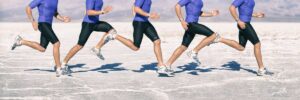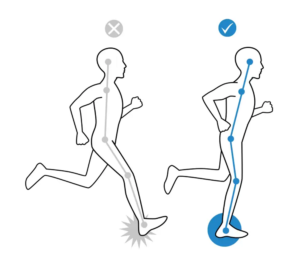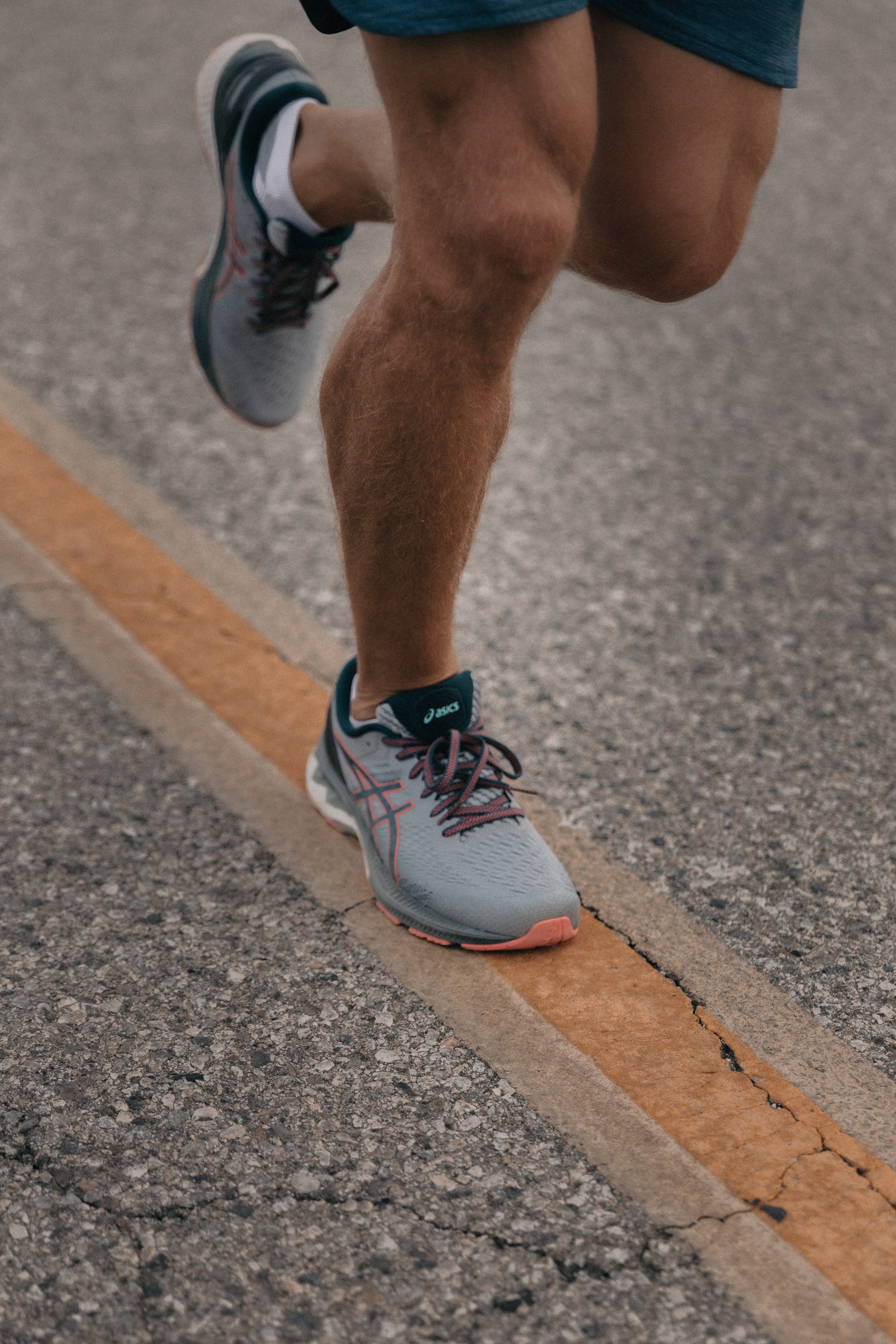
So, running… You might have decided to take it up over the past year. But did you know there’s a good way and a bad way to run?
The motion that your body moves through while running is called a “gait cycle”.
The complete gait cycle consists of two phases:
- Stance phase, when your foot is touching the ground, and
- Swing phase, when your foot is not touching the ground.
There is a lot to think about when further breaking down the phases of the running gait cycle. Look at the diagram below on the ideal basic body position from head to foot.

Since running is a whole-body workout, below you’ll find some key points to take into consideration for each body part when running:
- Head & Shoulders: Your head should be upright and ears should remain over the middle of the shoulders. Shoulders should remain relaxed, low, and in a fixed position with no visible lifting.
- Arms & Hands: Your elbows should be kept bent within 80-100 degrees and close to the sides of the body, swinging motion should come from the shoulders, and arms should swing back enough to feel a slight stretch reflex in the triceps. Hands should remain relaxed and do not clench your fists.
Note: Proper arm swing balances the body, reduces the amount of expended energy, and propels the body forward with each stride. Common problems are: limited arm swing, outward elbow movement, and crossing the arms in front of the body.
- Torso & Hips: The torso should remain relaxed, straight, and without any twisting from side to side. Hips should remain directly under the torso and try to avoid leaning forward from the hips.
- Knees: They should be slightly flexed when the foot contacts the ground and moves in a linear path with the hips. Try to avoid having your foot land in front of your knees.
- Feet: The feet should be pointed straight and land underneath the body to avoid overstriding.
There are three different foot striking positions:

- Rearfoot/Heel: The back of the foot makes initial ground contact (most common among runners)
- Midfoot: The center of the foot makes initial ground contact (evenly distributing impact)
- Forefoot: Both toes and ball of the foot make initial ground contact (occurs most commonly while sprinting or running uphill)
Research suggests athletes should continue using whichever foot strike occurs naturally for them. If you still feel that you need help with your running gait cycle, please contact our office so one of our therapists could assist you.
Innovative Physical Therapy, “Solutions in Motion”
You can give us a call at 619-260-0750 or email us at info@innovativept.net
References:
- Geiringer SR. Biomechanics of the running foot and related injuries. PhysMed Rehabil State Art Rev 1997;11(3):569–82.
- Ounpuu S. The biomechanics of walking and running. Clin Sports Med 1994;13(4):843–63.
- Williams KR. Biomechanics of running. Exerc Sport Sci Rev 1985;13:389–441.
